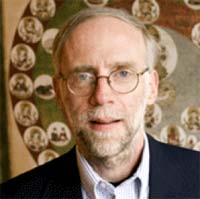Resources
In 2009 three Harvard Divinity School graduate students decided to create a new journal. Their goal? To provide a setting where they and their colleagues could publish peer-reviewed academic papers about “comparative theology.” They did not expect many readers beyond Harvard Yard.
Going into 2012, though, their new electronic publication, the Journal of Comparative Theology, has carved out its own niche, with followers not only in universities worldwide, but among lay readers as well. More than 300 have signed up for free subscriptions. Comments logged in response to articles suggest that non-academics find considerable value in the Journal.
Francis X. Clooney
The publication has its roots in the work of Professor Francis X. Clooney of Harvard Divinity School, author of Comparative Theology: Deep Learning Across Religious Borders (Wiley-Blackwell, 2010) and a dozen other books. Clooney and others have brought attention to Comparative Theology as an emerging discipline deserving attention from all theologians. Clooney’s influence on Axel Takacs and fellow graduate students Josh Daneshforooz and Paul Nicholas led them to launch the journal in 2009. Subsequently, Erik Resley joined them on the editorial board.
Takacs, now a doctoral candidate at Harvard, says, “The goal is to to offer graduate students who have an implicit or explicit interest in comparative theology an academic space in which to share their work. And a place to read other students' works within the field. Any field needs an outlet for academic works, and it is our hope that the Journal will be that outlet for Comparative Theology.”
Andover Hall, Harvard Divinity School
Each year masters- and doctoral-level graduate students in theological and divinity studies from Harvard and elsewhere submit about ten articles, each typically 30 pages in length. After peer review, three articles are selected for the upcoming Spring edition. Book reviews are posted in the Journal year-round and can be submitted by anyone.
Michelle Voss Roberts, assistant professor of Theology and Culture at Wake Forest University School of Divinity, makes good use of the Journal in her Comparative Theology classes. “I find the book reviews and articles are extensive and carefully written. I encourage my students to read them and consider publishing their own material in the Journal.”
Craig Phillips, a convert to Islam and graduate student in Islamic Studies and Christian-Muslim Relations at Hartford School of Theology, remembers being thrilled to hear his paper had been accepted. His “Green Creation: Comparative Ecological Theology in the Bible and Qur’an” was published in 2011. Phillips said, “As the readership of journals like this grows, we have a tremendous potential for reaching a worldwide audience and aiding students in building connections.” Phillips is working towards a career in the foreign service with hopes of “enabling understanding among religions to help solve the world’s conflicts rather than contribute to creating them.”
The growing strength of this small academic community provides one more sign that young people in the 21st century are willing and able to take interfaith dialogue into new, unexplored territory. For the interfaith movement, Harvard’s new publication is a treasure.
This issue of TIO offers a taste of what the Journal of Comparative Theology offers in a shortened version of Ben DeVan’s “As Iron Sharpens Iron, So Does One Tradition Sharpen Another,”published in the Journal’s 2010 inaugural issue.
The full 2010 and 2011 Journals can be found at their website. Sign up to receive notice of the 2012 issue in March.


